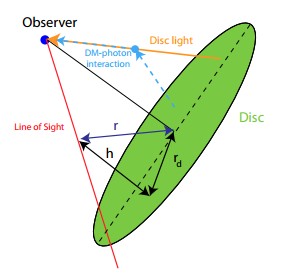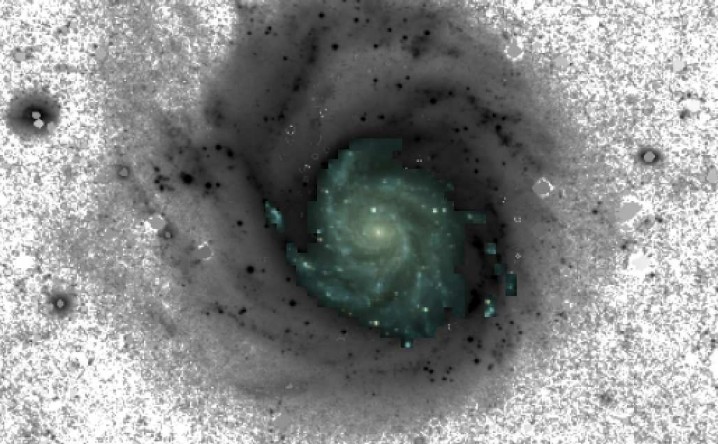The prevailing assumption about dark matter is that has no interaction with light, but European physicists who investigated a possible signature of dark matter at the edges of theM101 Pinwheel galaxy now believe that light may be interacting with dark matter to produce “light halos” — detectable glows around the edges spiral galaxies.
“Dark Matter can be a lot more interactive than previously thought,” Dr. Jonathan Davis of the Institut d’Astrophysique de Paris, an author of the report, told The Speaker. “So people usually think of Dark Matter particles as neutral and so devoid of any interactions with light, but we show that this need not be the case. Also, that it is important to be creative with ways of looking for Dark Matter as no one really knows how it should behave, or where a signal will show up first.”

“I think the idea of Dark Matter interacting with light is quite an exciting new field,” Davis told us. “Some people have looked on the effect of these interactions on the early universe. I think it would be interesting if there were future studies looking at other wavelengths of light with sensitive instruments, particularly the longer wavelengths where background light from stars should be less bright.”
The team observed the diffuse halos of light that are apparent at the outer edges of spiral galaxies — particularly the M101 Pinwheel galaxy, which they used as an example in the report.
The team theorized that light radiating from stars in that galaxy, if it was bouncing off dark matter on the outer periphery, would scatter around the galaxy in a particular way. An example used to convey the idea is that of a lamp glowing in fog.
“[The light] should be visible everywhere,” Davis stated. “The reason we focus on the edges of the galaxy is that this is where the light from stars should be dimmest. So although the DM glow is everywhere, it’s easiest to see at the edges as there is less competition with star light.
Scientists do not possess information by which the theory could be proven as of yet, and the observable patterns could also be explained as coming from other sources, Davis noted.
“At the moment there is no way of knowing if any glow is due to DM or stars. So we’re not claiming to have discovered anything yet. The galaxy we look at in our paper has a halo of older stars which make looking for a DM glow halo difficult. Indeed the glow in this case is probably due to those stars, but then you can’t rule out a DM contribution, which is what we show. However I think the emphasis should be on future dedicated searches for this light from DM scattering. If a dedicated search can separate the DM glow from other sources then they can really look for this signal, if indeed it’s there.”

There are several possible ways that the theory could be proven in the future, Davis explained.
“There are a few ways one could actually discovery DM-photon interactions for sure. Just through observations of galaxies if we saw a signal which had a very different dependence on the wavelength of light, compared to from stars or gas, then that would be interesting. Additionally if we discovered a signal of Dark Matter at the Large Hadron Collider or in Direct Detection experiments, that would be a big step forward.”
The report, “Glow in the Dark Matter: Observing Galactic Halos with Scattered Light,” was completed by Drs Jonathan Davis and Joseph Silk, and was published in APS Physics.
Images: from Davis’ report and from “First results from the dragonfly telephoto array: the apparent lack of a stellar halo in the massive spiral galaxy m101“
